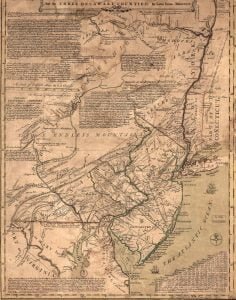Old Indian Trails of Pike’s Peak
The principal Indian trail into the mountains from the plains to the northeast of Pike’s Peak came in by way of the Garden Ranch, through what used to be known as Templeton’s Gap. It crossed Monument Creek about a mile above Colorado Springs, then followed up a ridge to the Mesa; then it went southwest over the Mesa and across Camp Creek, passing just south of the Garden of the Gods; from there it came down to the Fountain, about a mile west of Colorado City, and there joined another trail that came from the southeast up the east side … Read more


